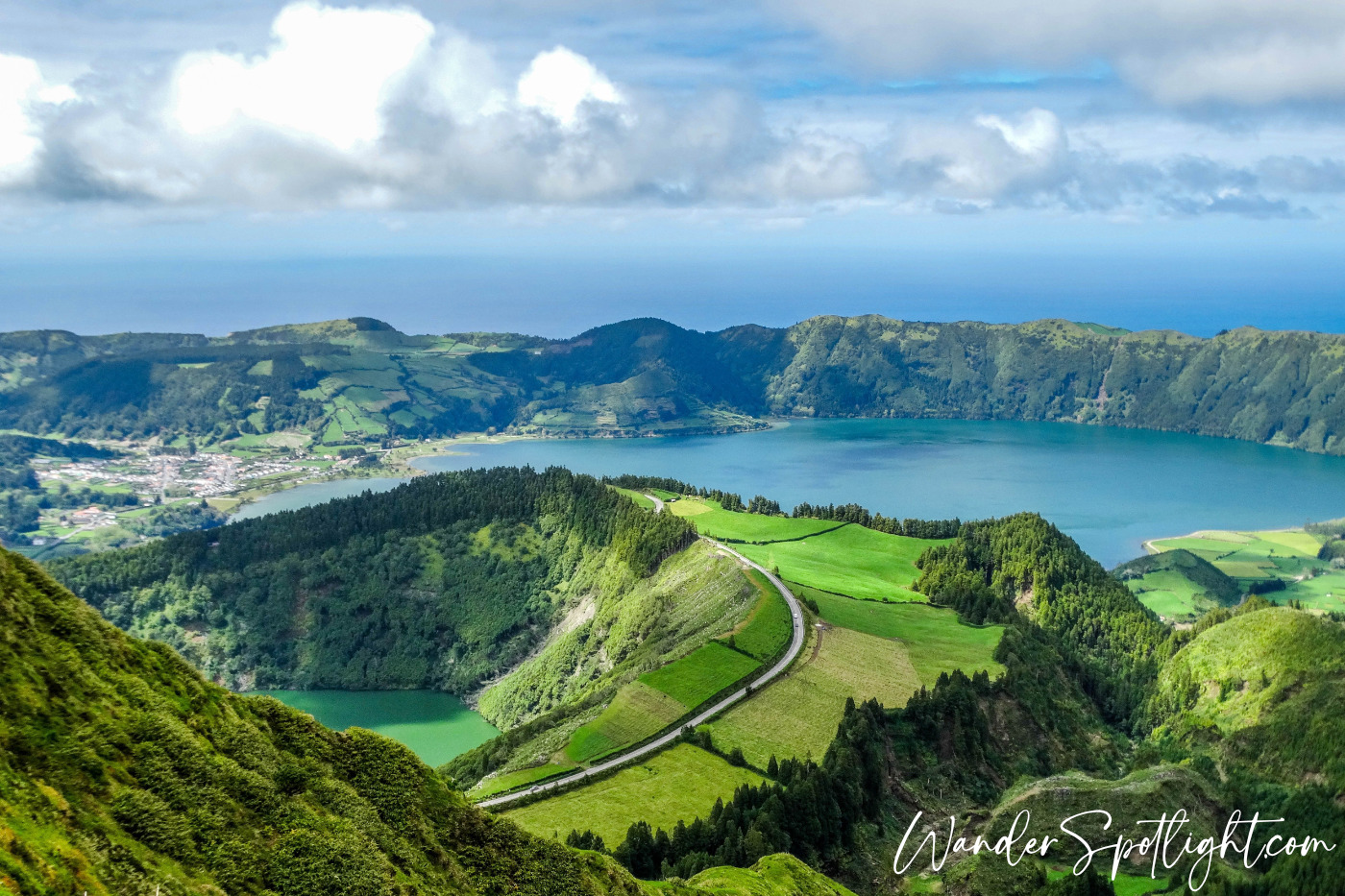The Azores, an enchanting Atlantic archipelago, beckons intrepid wanderers to explore its many facets—each isle a tapestry of culture, cuisine, and pristine nature. For centuries, travelers have ventured to uncover Hidden Gems in the Azores, enticed by the promise of untouched shores and welcoming locals. Today, these Portuguese Island Escapes continue to enthrall, offering endless possibilities for Island-Hopping in Portugal. Whether you crave volcanic wonders or tranquil ocean scenes, the Azores promise rare marvels at every turn.
Beyond the lush greenery and striking coastal panoramas, the region brims with Sao Miguel Highlights, deeply etched by centuries of maritime heritage. Expect to be amazed by Volcanic Landscapes in the Azores—crater lakes, steaming fumaroles, and basalt cliffs shaped by the Earth’s fiery core. Adventure abounds, from crater-edge hikes to whale-watching excursions, placing the Azores among the premier destinations for Azores Nature Adventures. There’s no better time to let the islands’ stories and secrets ignite your wanderlust.
Table of Contents
Magical Sete Cidades: Azores Nature Adventures
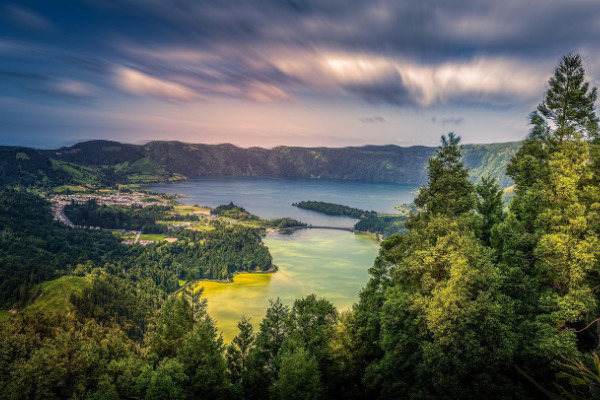
Sete Cidades, perched in the western region of São Miguel, has a hypnotic aura that captures your heart at first glance. I remember standing on the crater’s edge, the twin lakes shimmering with emerald and sapphire hues beneath a blanket of gentle mist. It felt as though I had stumbled upon a gateway to pure enchantment. In that moment, the rest of the world melted away, and I realized why these turquoise lagoons remain one of the most cherished Hidden Gems in the Azores.
Beyond its surreal vantage points, Sete Cidades is revered for its lush volcanic caldera—an emblem of Volcanic Landscapes in the Azores. As you wander the winding trails, each turn reveals a fresh perspective on the twin lakes, shifting from vibrant greens to dazzling blues under the shifting sunlight. You’ll find yourself enveloped by a quiet hush only punctuated by rustling leaves. Whether you kayak atop these placid waters or pedal a bicycle around the rim, you’re guaranteed unforgettable Azores Nature Adventures.
Practical Tips & Fees
Access to the viewpoints around Sete Cidades is free, though guided tours by local operators may have varying costs. For official information about hiking regulations, visit Visit Azores. Make sure to respect local signs and environmental guidelines as you explore this treasured crater landscape.
Pico Island’s Majestic Peak: Volcanic Landscapes in the Azores
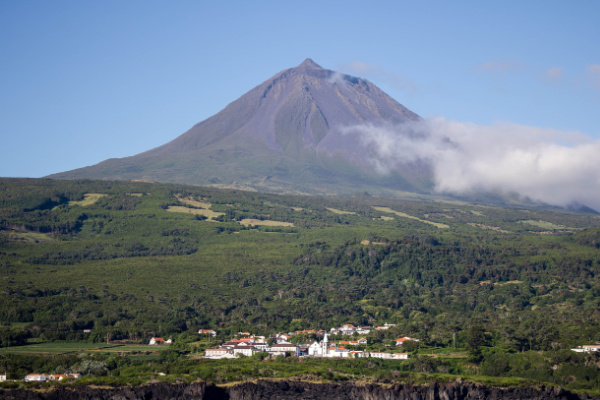
Pico Island towers above the ocean with its commanding volcanic summit, an emblem of Volcanic Landscapes in the Azores. My trek to the peak at sunrise remains etched in my mind—every stride bringing me closer to the clouds. Standing on the cusp of this formidable mountain, I could almost feel the Earth’s energy pulsating through my bones. The sky glowed in pastel hues, revealing an endless sea of swirling mist below, convincing me that the climb was a spiritual pilgrimage worth every challenge.
Its allure lies in the contrast—rugged basalt fields stretching to sparkling Atlantic waters. This dramatic terrain is dotted with UNESCO-protected vineyards, where lava stone walls cradle precious grapevines. Scaling Pico’s summit offers unparalleled panoramas, with glimpses of nearby islands in every direction. The island’s harmonious blend of vine-laden slopes, black volcanic rocks, and azure seas is an ode to Portuguese Island Escapes. When you conquer Pico, you don’t just witness Volcanic Landscapes in the Azores; you feel part of its fiery legacy.
Practical Tips & Fees
A small climbing fee is charged at the mountain’s base, supporting conservation efforts. Reserve a spot in advance during peak season (June-August). Sturdy hiking boots, layered clothing, and a respectful mindset are essential for this remarkable venture.
Whale Watching in the Azores: Faial’s Oceanic Charms
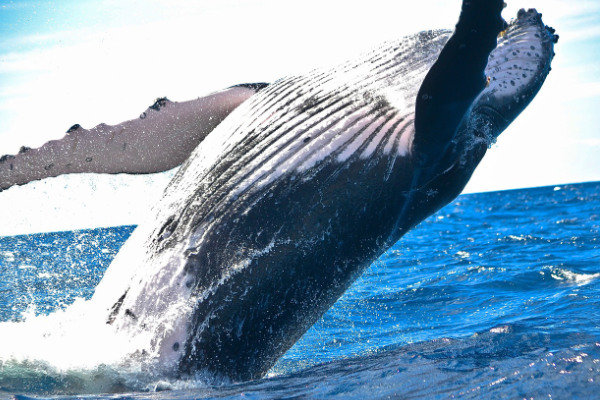
The first time I joined a Whale Watching in the Azores excursion from Faial, my heart raced with anticipation. When a majestic sperm whale breached the surface, time seemed to pause. The powerful tail slapping the water resonated deep within my core. Witnessing these gentle giants in the wild felt surreal—a humbling moment that reminded me of our fragile bond with nature. Every whale encounter became a treasure, reinforcing Faial’s place among the Top Azores Islands for marine experiences.
Faial’s crystal-clear waters serve as a vibrant stage for more than twenty whale and dolphin species. Local tour operators share insight into the region’s maritime heritage and the essential role whales once played in Azorean life. This is not just about spotting whales; it’s about forging a deeper connection with the Atlantic’s rhythms. Cradled by dramatic cliffs and azure seas, Faial’s vantage points exemplify why Whale Watching in the Azores has become an unmissable experience in your Island-Hopping in Portugal itinerary.
Practical Tips & Fees
Prices for whale watching tours vary among operators, typically ranging around €50–€70. Booking ahead is recommended, especially in peak months.
Terceira’s Colorful Streets: Portuguese Island Escapes
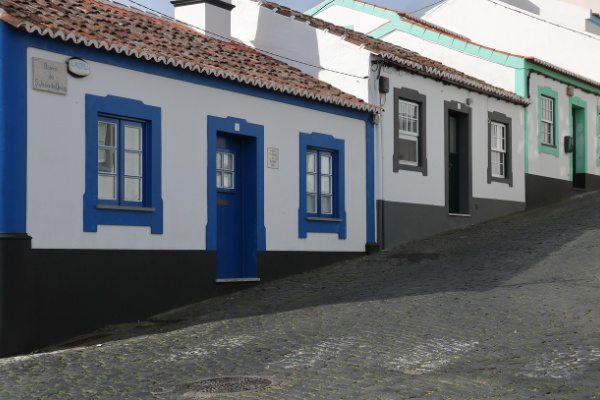
Strolling through Terceira’s Angra do Heroísmo, I felt like I’d stepped into a kaleidoscope of vibrant facades, ornate balconies, and blossoming bougainvillea. There’s a tangible exuberance, a cultural heartbeat that invites you to slow down, mingle with locals, and sample sweet queijadas from family-run bakeries. Every corner I turned revealed bright murals and lively festivals, reminding me that Portuguese Island Escapes are as much about embracing warmth and hospitality as they are about reveling in nature’s splendor.
A UNESCO World Heritage Site, Angra do Heroísmo brims with architectural gems, from stately cathedrals to whitewashed chapels perched on hilly lanes. Flashes of pastel pinks and yellows contrast against the Atlantic’s serene blues. Wander the cobblestone streets to discover hidden patisseries and local artisans offering handcrafted souvenirs. Terceira’s culture-rich experiences augment the typical sun-and-sea narrative, making it essential in any journey dedicated to discovering Hidden Gems in the Azores.
Practical Tips & Fees
While entry to the old town is free, some historical buildings or museums may require a small admission fee. Terceira’s roads can be narrow; consider renting a compact car or exploring on foot to immerse yourself fully in this vivid coastal paradise.
Furnas Valley: The Heart of Azores Hot Springs
Furnas Valley is where I fell in love with the nurturing embrace of geothermal wonders. Encircled by rolling hills, you’ll smell the pungent sulfur as soon as you arrive. The swirling clouds of steam, emerging from the earth’s hidden depths, instill a sense of awe. Slipping into one of the Azores Hot Springs felt like stepping into a warm lullaby, dissolving every shred of tension. It’s an immersive experience in relaxation—a corner of the Atlantic Archipelago that fosters profound serenity.
Renowned for its hot springs, Furnas also boasts “cozido,” a hearty stew slow-cooked using geothermal heat beneath the soil. This phenomenon underscores the region’s volcanic might—a living testament to Volcanic Landscapes in the Azores. Wander among fumaroles spouting steam into the crisp air or soak in iron-rich thermal pools that claim beneficial health properties. From reviving mud baths to the tranquil Terra Nostra Garden’s centuries-old camellias, Furnas offers an essential, rejuvenating facet of Azores Nature Adventures.
Practical Tips & Fees
Some hot springs carry a nominal entrance fee of around €3–€8, including Terra Nostra Park. Always adhere to posted guidelines regarding water temperatures. Bring a dark bathing suit, as the iron-rich waters can leave light-colored fabrics stained.
São Jorge’s Fajãs: Hidden Gems in the Azores
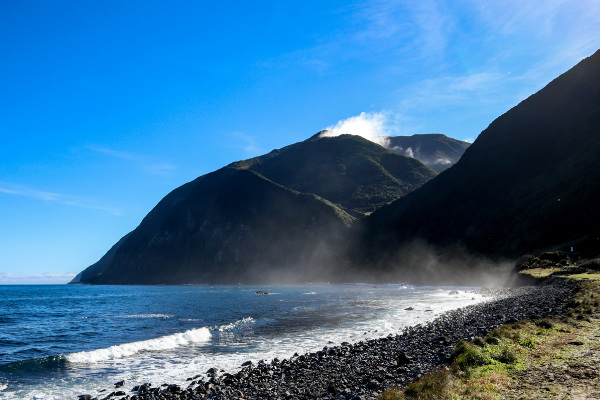
On São Jorge, I found a tapestry of coastal plains—called fajãs—nestled between cliffs and sea. No single photograph can capture their magic: each fajã boasts a hush, a timeless calm untouched by crowds. One morning, I watched the sunrise dye the clouds in vivid pink, the basalt cliffs providing a dark silhouette. That sense of being alone with the elements, inhaling salt-laced air, and reveling in the raw coastline made me realize how these truly are Hidden Gems in the Azores.
Formed by lava flows and landslides, these fajãs cradle microclimates ideal for coffee, vines, and tropical fruits. The mesmerizing interplay of cliffs and coastal plains fosters some of the most rewarding Azores Hiking Trails, leading through lush forests to wave-battered shores. Explorers are often rewarded with hidden lagoons, rustic chapels, or quiet fishing communities. São Jorge’s serene vistas remind visitors why Island-Hopping in Portugal always leads to new discoveries and underscores the archipelago’s status as a top-tier nature escape.
Practical Tips & Fees
Most fajãs are free to explore. However, certain private reserves or protected habitats may ask for a modest fee. Pack sturdy shoes and be prepared for steep descents. The reward is an unspoiled corner of the Atlantic Archipelago like no other.
Graciosa’s Ancient Cave: Top Azores Islands Experience
Graciosa, often overlooked by travelers, offered me a subterranean revelation in its volcanic marvel: Furna do Enxofre. Descending into this cavern, I was immediately enveloped by an otherworldly hush. Sulfuric vents whispered eerie lullabies, intensifying the sense of being suspended in time. It was in that shadowy stillness that I felt the living pulse of Top Azores Islands experiences—where geology and spirituality collide. Emerging again into daylight, the memory stayed with me like a precious secret.
Furna do Enxofre represents the beating heart of Volcanic Landscapes in the Azores, with a cathedral-like dome and a small sulfuric lake. The cavern’s rare formation is widely studied by geologists and sought out by curious explorers. Above ground, Graciosa’s tranquil countryside has earned it the nickname “White Island,” boasting gentle slopes, windmills, and vineyards. By venturing inside Furna do Enxofre, you capture a glimpse of the archipelago’s fiery birth, rounding out your sense of Azores Nature Adventures.
Practical Tips & Fees
An entrance fee—typically a few euros—applies for Furna do Enxofre’s visitor center. Mind the steep stairs and the cave’s sulfur-laced air; if you’re sensitive to strong odors, consider wearing a light mask.
Santa Maria’s Gold Sand Beach: Atlantic Archipelago Bliss
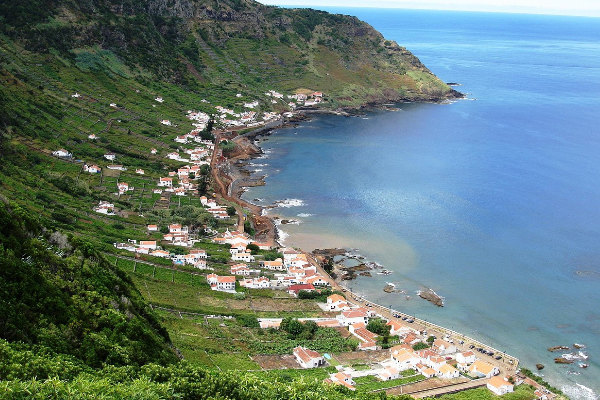
Discovering Praia Formosa on Santa Maria felt like stumbling into a dream: warm golden sands stretching along turquoise waters, gently caressed by the sun. A playful breeze drifted across my face, carrying the laughter of local families and the smell of fresh seafood sizzling at seaside bars. The warmth in the air matched the kindness of the islanders. I sat on the shore, toes in the sand, marveling at the quiet majesty of this lesser-known corner of the Atlantic Archipelago.
In an archipelago where most beaches are of volcanic black sand, Santa Maria’s shimmering golden shore stands out as a radiant anomaly. A gentle slope into calm waters makes it perfect for a laid-back retreat. But Santa Maria is more than sunbathing; surfers and paddleboarders find ample swells, especially near the rockier points. It’s an invitation to slow down and revel in nature’s diversity—one more gem in a region teeming with Azores Nature Adventures for wanderers seeking pure bliss.
Practical Tips & Fees
Beach access is free, with nominal charges for sunbed rentals or nearby facilities. Parking can fill quickly on weekends, so arrive early. Pair a beach day with a scenic drive around Santa Maria for an unforgettable day trip.
Flores: A Tapestry of Waterfalls and Azores Hiking Trails
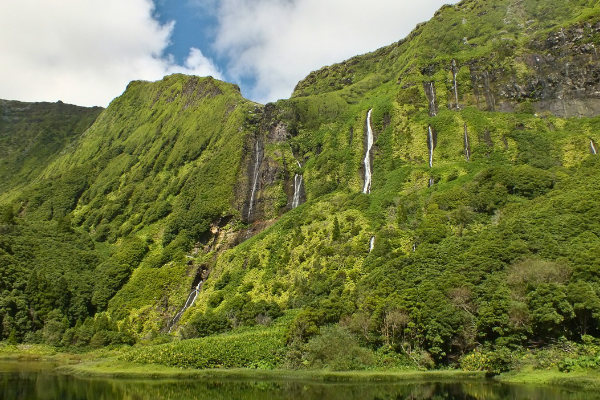
Flores greeted me with a rainbow of cascades tumbling down vertiginous cliffs into serene pools. I remember weaving through fern-draped paths on an early morning trek, the forest floor glowing under scattered sunlight. With every new bend, the hypnotic roar of waterfalls would guide me onward. The sense of discovery—of stepping deeper into an untouched paradise—made Flores feel like nature’s open-air cathedral. This slice of Island-Hopping in Portugal is an irresistible invitation to commune with the wild heart of the Azores.
Often hailed as the most verdant island, Flores is a haven for hikers chasing postcard-perfect vistas. Trails wind past basalt walls and crater lakes, offering close encounters with the archipelago’s raw beauty. This lush terrain exemplifies Azores Hiking Trails at their finest—immersive walks bridging waterfalls, natural pools, and spectacular ocean overlooks. Its remote charm ensures smaller crowds, elevating that sense of personal discovery. Here, Azores Nature Adventures merge seamlessly with the mesmerizing tapestry of waterfalls that define the island’s spirit.
Practical Tips & Fees
Access to hiking routes is generally free. However, certain protected areas or guided tours may involve a fee. Pack a rain jacket and waterproof shoes—Flores’ frequent showers keep the vegetation lush but can turn trails slippery.
Ponta Delgada Attractions: São Miguel Highlights
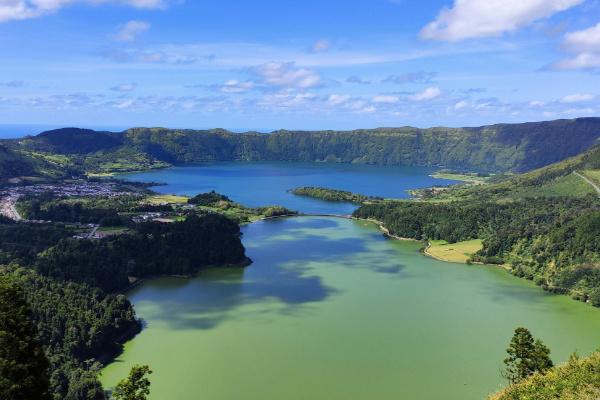
Ponta Delgada embodies the cultural heartbeat of São Miguel. The moment I strolled into its lively avenues, flanked by historical buildings and mosaic pavements, I sensed the island’s dynamic energy. Elegant black-and-white architecture, reminiscent of old Portuguese style, offers a timeless backdrop for sidewalk cafés and bustling markets. It’s here that I first savored a hot cup of locally grown tea and pastel de nata. Ponta Delgada’s synergy of old-world heritage and modern flair makes it a top Sao Miguel Highlights stop.
As the capital of São Miguel, Ponta Delgada brims with Ponta Delgada Attractions: lively marina promenades, baroque churches, and charming squares teeming with local vendors. The city’s fusion of maritime commerce and traditional fishing roots fosters a multicultural vibe—evident in festivals, street art, and gastronomic delights. Visitors can explore the iconic Portas da Cidade archways, sample exotic fruits at Mercado da Graça, or soak in the energy of nightlife hotspots. Truly, Ponta Delgada frames Portuguese Island Escapes in an urban yet authentically Azorean light.
Practical Tips & Fees
Wandering the city streets is free. Some museums or cultural centers charge a small entrance fee. If possible, park outside the historic center and walk in; the narrow lanes add an extra layer of old-world charm to your experience.
Corvo’s Untamed Wilderness: Azores Nature Adventures
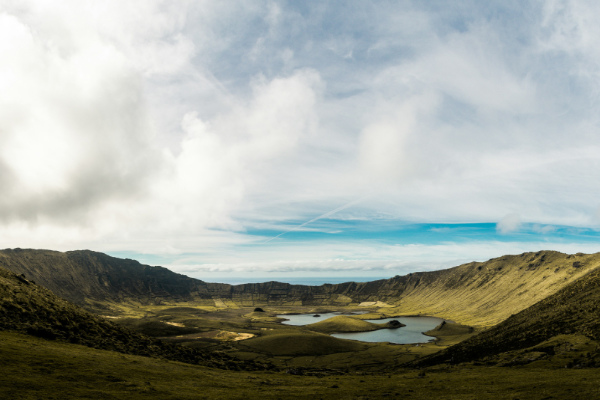
Corvo, the smallest island of this Atlantic Archipelago, left me speechless with its unspoiled horizons. Taking a boat from Flores, I braced the salty spray as anticipation built. Upon arrival, the minuscule settlement felt welcoming, but it was the island’s caldera that took my breath away: a vast, emerald amphitheater brimming with tranquil lakes. Standing on its rim was like peering into the secret heart of the Azores, a silent testament to the raw force that formed these Volcanic Landscapes in the Azores.
Corvo’s entire landmass epitomizes Azores Nature Adventures; from the volcanic crater to its rugged shoreline teeming with birdlife, there’s no shortage of wonders. The island’s isolation has preserved traditions rarely found elsewhere—fishing methods passed down through generations, handcrafted goods reflective of centuries-old customs. Corvo’s topography invites humble exploration: limited roads, few cars, and countless hidden pockets of serenity. For those pursuing genuine Island-Hopping in Portugal, Corvo is a pilgrimage to nature’s pure, unbridled essence.
Practical Tips & Fees
Reaching Corvo typically involves a ferry or small plane. Boat tour operators may charge around €20–€40. No major entry fees apply, but respect local conservation guidelines to keep Corvo pristine.
Faial and Pico Must-Sees: Island-Hopping in Portugal Finale
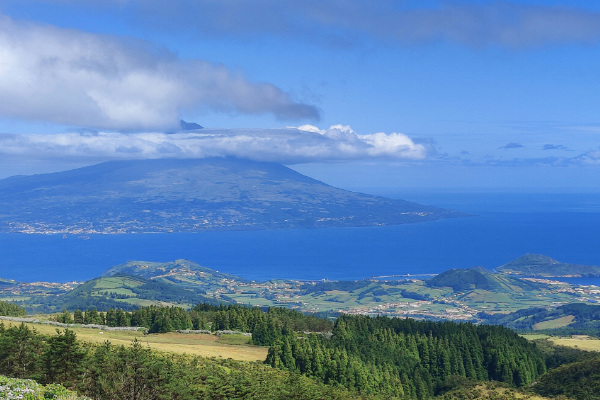
Stepping onto Faial’s black-sand beaches, I felt the echoes of maritime explorers who once set sail for distant lands. The view of Pico’s towering cone across the channel reminded me of the region’s deep volcanic roots. Horta Marina bustled with life: vibrant yachts, sea-salt-scented breezes, and travelers exchanging stories. Venturing between these two neighbors, I grasped why they’re considered Faial and Pico Must-Sees: each embodies a distinct facet of the Azorean spirit, shining brightly in any Island-Hopping in Portugal itinerary.
Faial’s Capelinhos Volcano site, reminiscent of a lunar landscape, is a testament to the Azores’ dynamic geology. Meanwhile, Pico’s UNESCO-protected vineyards sprawl across volcanic slopes, producing wine with an unmistakable minerality. Crossing the narrow strait between Faial and Pico offers panoramic glimpses of basaltic coastlines and the shimmering Atlantic. Whether you’re tasting robust wines, exploring the submerged volcanic heritage, or simply ferry-hopping, these two isles define the synergy of Portuguese Island Escapes—a perfect crescendo for your Azorean odyssey.
Practical Tips & Fees
Access to Horta Marina is free, though museum entries may cost a few euros. Ferries between Faial and Pico generally run daily, weather permitting. Budget extra time to indulge in local wines, fresh seafood, and, above all, the mesmerizing synergy of these final stops on your journey.
Best Time to Visit Azores, Safety, Budget, and Travel Tips
Exploring the Azores Islands is a year-round delight, although the Best Time to Visit the Azores typically spans from late spring to early autumn. During these months, sunny skies illuminate the Volcanic Landscapes , and the Atlantic waters are calmer, which is ideal for Whale Watching and indulging in Azores Nature Adventures. However, winter travelers can also revel in a quieter atmosphere, fewer crowds, and mist-shrouded vistas that lend the islands a mysterious allure.
Seasonal Highlights
- Spring (March–May): Lush greenery emerges, flowers bloom, and mild temperatures make it perfect for hikers eager to tackle Hiking Trails.
- Summer (June–August): Peak season for festivals, lively streets, and excellent conditions for aquatic activities like Whale Watching in the Azores. The beaches bustle with energy, and advanced booking is crucial, especially on islands with limited accommodation.
- Autumn (September–November): Ocean waters are still warm, while crowds thin. It’s a wonderful period for surfers chasing Atlantic swells.
- Winter (December–February): Fewer tourists and dramatic weather patterns. Inter-island ferries may be less frequent, so keep an eye on schedules.
Safety and Security
The Azores are generally safe, offering a sense of tranquility characteristic of Island Escapes. Still, it’s wise to follow common-sense measures: secure valuables in a locked place, stay informed on current ferry or flight advisories, and respect nature by adhering to posted signs and weather reports. If you’re venturing to remote areas or challenging Hiking Trails, inform someone about your route.
Budget Recommendations
- Shoestring Adventures: Opt for hostels or guesthouses, shop at local markets for fresh produce, and use public transport where possible. Grab affordable meals at small cafés or partake in local festivals offering free entertainment.
- Mid-Range Comfort: Rent a modest car for easy island exploration, stay in family-run hotels or mid-range accommodations, and savor local delicacies at moderately priced restaurants. Pre-book tours like Whale Watching or guided hikes to save on last-minute surcharges.
- Luxury Retreats: Indulge in boutique hotels or private villas overlooking the ocean. Reserve private tours for exclusive volcano hikes or custom Azores Hot Springs experiences. Enjoy fine-dining spots offering fresh catches, exotic wines, and panoramic sea views.
Transportation Tips
- Inter-Island Travel: Ferries operate frequently among the central islands (Faial, Pico, São Jorge). For more remote islands like Flores, Corvo, or Santa Maria, planes or seasonal ferries may be your best bet. Keep an eye on the weather, as rough seas can affect schedules.
- Getting Around: Renting a car is the most flexible option for exploring hidden corners of São Miguel or discovering Faial and Pico Must-Sees. Public buses exist but may be less frequent. Taxis and guided tours offer door-to-door convenience for travelers who prefer not to drive.
- Accommodation Availability: Book early during summer to secure optimal stays, especially in hotspots with limited lodging. Off-season travelers can snag lower rates and more availability. However, always confirm ferry and flight times, as reduced schedules might affect your plans.
Armed with these insights, you can embark on your personalized adventure across the Azores Islands, timing your visit to align with the best weather, safety measures, and your preferred budget range. Whether it’s hiking along the crater rims, soaking in geothermal pools, or tasting local flavors in vibrant coastal towns, the Azores cater to every brand of wanderlust.
Conclusion
Touring the Azores reveals an enthralling mosaic of Hidden Gems in the Azores—from the mist-kissed caldera lakes of Sete Cidades to the sunlit dunes of Santa Maria. You’ll find yourself awe-struck by Volcanic Landscapes in the Azores, lulled by the gentle sway of ocean waves, and invigorated by trail networks weaving through lush hills. Every island encourages a deeper exploration of the region’s natural wonders and cultural traditions, forging memories that endure.
From Whale Watching off Faial’s coast to marveling at the subterranean caverns of Graciosa, each escapade underscores why this Atlantic Archipelago stands out among premier global destinations. Few places can match the diversity and timeless charm that define Azores Nature Adventures. Whether you’re seeking tranquillity or adrenaline, the Azores promise an immersive journey that defies ordinary travel, leaving you eager to return to these Islands time and again.
After exploring the Hidden Gems in the Azores, it’s time to shift from volcanic landscapes and Atlantic horizons to the breathtaking wilderness of the United States. If the untouched beauty of the Azores inspired you to seek more immersive outdoor escapes, you’ll love our next adventure: 13 Best Camping Destinations in the USA: An Unforgettable Guide for Nature Seekers. From towering redwoods to vast desert skies, discover the most awe-inspiring places to pitch your tent and reconnect with nature. Ready to explore? Let’s dive into the heart of America’s great outdoors!
Do I need a car to explore the Azores thoroughly?
A car offers flexibility, especially on larger islands like São Miguel for Highlights and Terceira for culturally rich explorations. However, if you plan your itinerary well, you can rely on ferries for Island-Hopping in Portugal, guided tours, and occasional taxis—particularly on smaller islands where sights are more concentrated.
Is it safe to do volcanic hikes in the Azores?
Most hiking routes are well-maintained, making them relatively safe for travelers, and the Azores enjoy a reputation for overall security. Just remember to check official trail conditions at reputable sources like Visit Azores and take proper gear. If hiking around summits like Pico, consider hiring a guide, especially in adverse weather.
What about swimming in the Azores Hot Springs?
Thermal pools are a highlight of Azores Nature Adventures. Each site, such as Furnas, may have specific rules regarding bathing times and required fees. The water can be quite warm and iron-rich, so wear darker swimsuits and stay hydrated. Always follow posted guidelines to ensure you enjoy these unique volcanic features safely.
When is the Best Time to Visit the Azores for whale watching?
While Whale Watching in the Azores is possible year-round, peak sightings occur from April to October. Sperm whales are present most of the time, but spring and early summer see migrations of different species. Remember, sightings are never guaranteed, though local operators often have high success rates.
Which islands should I visit for a shorter trip?
If you have limited time, focus on Sao Miguel Highlights—including Ponta Delgada, Sete Cidades, and Furnas. You might add Pico or Faial to experience Faial and Pico Must-Sees such as the Capelinhos Volcano and the UNESCO-protected vineyards. Even a brief foray reveals the Azores’ volcanic splendor and maritime heritage.

